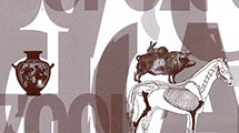

 Anthropozoologica
45 (1) - Pages 25-45
Anthropozoologica
45 (1) - Pages 25-45The domestication of camelids, llamas and alpacas, took place between 6000 and 5500 BP in the central Andes. These animals played a fundamental role in the development of pre-Hispanic societies. Among the Mochica (100-800 AD), a coastal culture of northern Peru, the meat consumed mainly consisted of camelids and guinea pigs but also deer, fish and shellfish. However, these wild creatures were not used in funerary rites, especially those involving the symbolic food of the dead. The latest ethnohistorical and ethnographic data confirm the continuity of these ritual practices. The llama has remained, up to our day, the only animal which may be consumed at special events, such as funerary meals or propitiatory ceremonies. This occurs in particular at Carnival, when the heart and the lungs of a sacrificed llama are offered, burned and symbolically consumed by the Apu (spirits of the mountain), the Pachamama (the Earth Mother) and the Tio (tutelary divinity of the mine). We will attempt to understand how the absence of wild animals in these rites corresponds to ancient cultural traditions, reuniting and opposing the terrestrial world and that of the divinities, the domestic world and the wild, this conceptual whole being a guarantee of order and continuity for the society.
Sacrifice, funerary rites, offering, feast, dualism, Mochica culture, Peru.